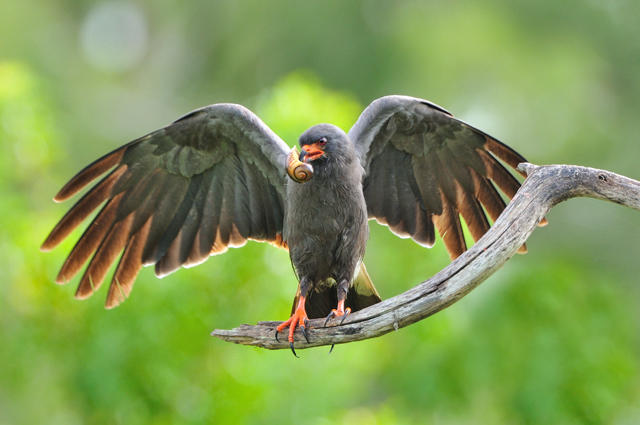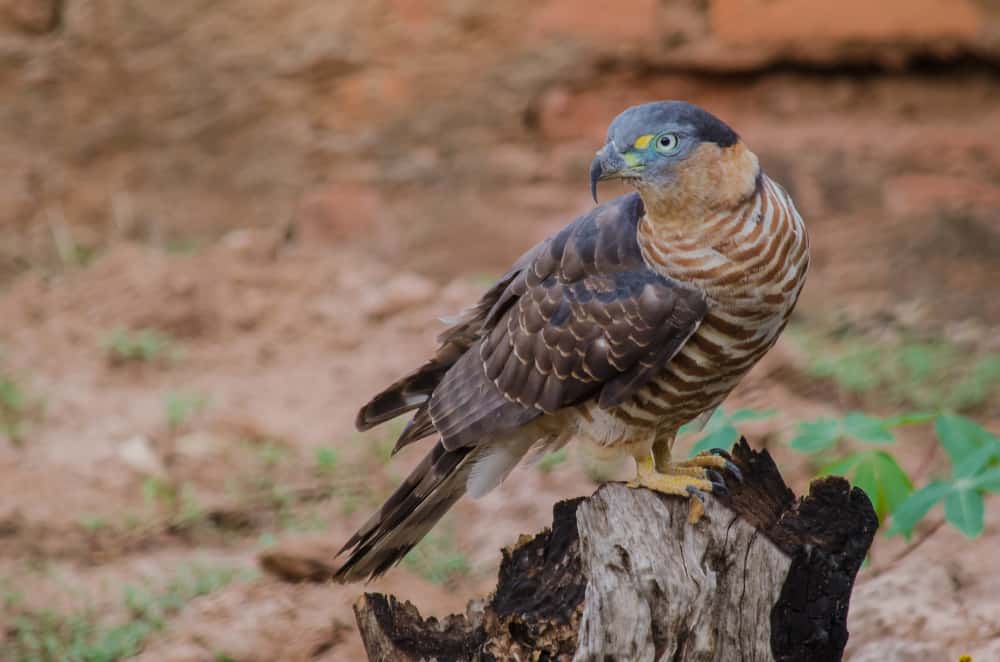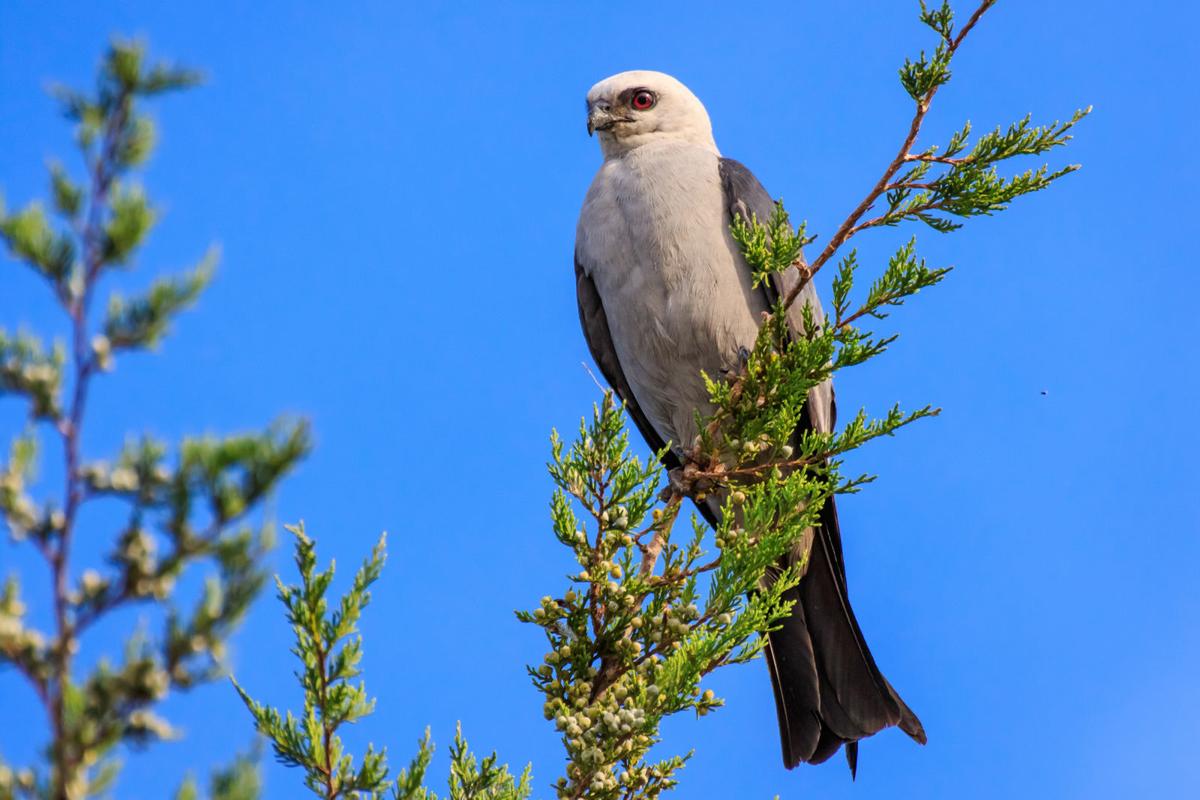Kites are a group of birds of prey that belong to the Accipitridae family, which includes hawks, eagles, and buzzards. They are named after their ability to use wind currents to their advantage, soaring while hunting for prey.
Kites are found worldwide in warm regions and are typically lightly built, with a small head, partly bare face, short beak, and long narrow wings and tail.
You are reading: 6 Soaring Types Of Kite Birds
There are several types of kites, including the Hook-Billed Kite, Mississippi Kite, Snail Kite, Whistling Kite, Red Kite, and Swallow-tailed Kite.
Researchers have divided kites into two categories: hovering and soaring, with the Elaninae subfamily containing hovering kites, and the Milvinae subfamily containing soaring kites. In this article, we will explore the different types of soaring kites in more detail.

6 Soaring Types Of Kite Birds
Hook-Billed Kite

The Hook-Billed Kite (Chondrohierax uncinatus) is a bird of prey in the family Accipitridae, which also includes many other diurnal raptors such as kites, eagles, and harriers. It is found in the Americas, including the Rio Grande Valley of Texas in the United States, Mexico, the Caribbean, Central America, and tropical South America.
The Hook-Billed Kite is a medium-sized raptor with a large head and a very large, hooked bill. It has a long tail and very rounded wings often described as paddle-shaped. Males are elegant gray above, with barred underparts, and females are brown above with a rufous wash on the head and neck.
The Hook-Billed Kite is known for its unique feeding behavior, hunting for snails inside tree canopies, using their curved bills as a wedge to crack the shells.
The nest, a flimsy platform of sticks, is built by both sexes, and the Hook-Billed Kite lays two to three buff-white eggs marked with red-brown.
The incubation is by both sexes, and the semialtricial young stay in the nest 35–45 days and are fed by both sexes. The Hook-Billed Kite is often considered sluggish and retiring, preferring to perch inside leafy canopies when not flying.
Mississippi Kite

The Mississippi Kite (Ictinia mississippiensis) is a small bird of prey in the family Accipitridae. It is a graceful flier with narrow, pointed wings, often appearing to float in the air.
The Mississippi Kite is an inky mix of gray and black, lightening to pale gray-white on the head and in the secondaries of the wings. It is most common in the southern United States, with the southern Great Plains considered a stronghold for the species.
However, its breeding territory has expanded in recent years, and Mississippi Kites have been regularly recorded in the southern New England states, with a pair successfully raising young as far north as New Hampshire.
Another pair was observed breeding in Ohio in 2007. Mississippi Kites are social birds, gathering in roosts in late summer, and they do not maintain territories. They feed on large insects, small mammals, and reptiles, and they are known to dive-bomb intruders that come too close to their nests.
Read more : Why Does My Budgie Nibble My Finger
The Mississippi Kite is a beautiful, falcon-like bird whose body is an overall gray color and whose head is a lighter ashy gray. It has a completely black tail, and young birds are distinguished by the bands on their tails and heavily streaked bodies.
Snail Kite
The Snail Kite (Rostrhamus sociabilis) is a bird of prey within the family Accipitridae, which also includes eagles, hawks, and Old World vultures. It is a highly specialized bird that feeds almost exclusively on apple snails, a freshwater mollusk that occurs in Central and South America.
Snail kites are 36 to 48 cm (14 to 19 in) long with a 99–120 cm (39–47 in) wingspan, and they weigh from 300 to 570 g (11 to 20 oz). There is very limited sexual dimorphism, with the female averaging only 3% larger than the male.
Snail kites have long, broad, and rounded wings, which measure 29–33 cm (11–13 in) each, and a long tail, at 16–21 cm (6.3–8.3 in), with a white rump and undertail coverts. The dark, deeply hooked beak, measuring 2.9–4 cm (1.1–1.6 in), is an adaptation to its diet.
The Snail Kite is a locally endangered species in the Florida Everglades, with a population of less than 400 breeding pairs. Research has demonstrated that water-level control in the Everglades is depleting the population of apple snails.
However, this species is not generally threatened over its extensive range. Snail kites have been observed eating other prey items in Florida, including crayfish, crabs, black crappie, small turtles, and rodents.
It is believed that snail kites turn to these alternatives only when apple snails become scarce, such as during drought.
Whistling Kite
The Whistling Kite (Haliastur sphenurus) is a medium-sized diurnal raptor found throughout Australia, New Caledonia, and much of New Guinea. It is also called the whistling eagle or whistling hawk, named for its loud whistling call, which it often gives in flight.
Here are some interesting facts about the Whistling Kite:
– Appearance: The Whistling Kite looks small-headed and long-tailed, with wingtips falling well short of the tail tip when the bird is perched. Though its legs are short, the bird walks easily on the ground. Whistling kites soar on slightly bowed wings, with their long flight feathers often well-splayed. The striking pattern on their underwings is distinctive.
– Diet: Whistling Kites are scavengers and feed on a variety of prey, including fish, carrion, insects, and small mammals. They are also known to pirate meals from ibises and herons and from other raptors, and to force large waterbirds to regurgitate their catches. They regularly patrol roads in search of roadkill, and hover over the edges of grass fires in search of potential prey fleeing the flames, sometimes carrying burning sticks and dropping them on unburnt areas.
– Habitat: The Whistling Kite inhabits a wide variety of habitats and can be seen soaring or hunting around swamps, lakes, rivers, estuaries, coastlines, savanna woodland, and other open areas.
– Breeding: The Whistling Kite’s nest is a bulky platform made of sticks and lined with green leaves, placed in an upright fork of a tall tree, often a eucalypt or pine in a riparian area. Pairs often re-use the same nest year after year, annually adding material until the platform becomes quite large. The female lays one to three eggs, which are incubated by both parents for about 35 days. The young fledge after about 45 days.
The Whistling Kite is a fascinating bird of prey with unique characteristics and behaviors that make it an important part of the ecosystem in Australia, New Caledonia, and New Guinea.
Red Kite
The Red Kite (Milvus milvus) is a medium-large bird of prey in the family Accipitridae, which also includes many other diurnal raptors such as eagles, buzzards, and harriers. Here are some interesting facts about the Red Kite:
– Appearance: Red kites are 60 to 70 cm (24 to 28 in) long with a 175–179 cm (69–70 in) wingspan; males weigh 800–1,200 g (28–42 oz), and females 1,000–1,300 g (35–46 oz). They are an elegant bird, soaring on long wings held at a dihedral, and long forked tail, twisting as it changes direction. The body, upper tail, and wing coverts are rufous, and the white primary flight feathers contrast with the black wing tips and dark secondaries.
Read more : Do Penguins Have Legs Or Just Feet
– Diet: Red kites are generalist scavengers and predators. Their diet consists mainly of carrion of large domestic animals such as sheep and pigs, roadkill, and shored fish. They also take small mammals such as mice, voles, shrews, stoats, young hares, and rabbits. Live birds are also taken, especially young or wounded, such as crows, doves, starlings, thrushes, larks, gulls, and waterfowls. In the United Kingdom, there have been several unusual instances of red kites stealing food from people in a similar manner to gulls.
– Habitat: Red kites are found in Europe, northern Africa, and the Middle East. They prefer open countryside with some woodland and are often seen soaring over hills and valleys.
– Breeding: Red kites build their nests in trees, usually in the fork of a large branch, and lay two to four eggs. Both parents incubate the eggs and feed the young. The young fledge after about 50 days.
The Red Kite is a beautiful bird of prey that has made a remarkable comeback in the United Kingdom after being almost wiped out due to persecution. It is now a common sight in many parts of the country and has been voted “Wales’s favourite bird”.
Swallow-tailed Kite
The Swallow-tailed Kite (Elanoides forficatus) is a pernine raptor that breeds from the southeastern United States to eastern Peru and northern Argentina. Here are some interesting facts about the Swallow-tailed Kite:
– Appearance: Swallow-tailed Kites are large but slender and buoyant raptors. They have long, narrow, pointed wings, slim bodies, and a very long, deeply forked tail. The black-and-white plumage is striking, with shining blue-gray upperwings.
– Habitat: Swallow-tailed Kites require tall trees for nesting and nearby open country with abundant prey. They are found in wooded river swamps, open pine woods near marsh or prairie, cypress swamps, other riverside swamp forests, lowland rainforests, and mountain cloud forests.
– Diet: Swallow-tailed Kites are extremely maneuverable in flight and catch flying insects in the air. They take much of their food by swooping low over trees or lower growth, picking small creatures from the twigs or leaves without pausing. They also take young birds of other species out of their nests.
– Breeding: Swallow-tailed Kites build their nests in tall trees, usually in the fork of a large branch, and lay two to three creamy-white eggs marked with dark brown. Both parents incubate the eggs, and the young fledge after about five to six weeks.
The Swallow-tailed Kite is a beautiful bird of prey, striking in its shape, pattern, and extraordinarily graceful flight. It is usually seen in flight, often high over the trees, and is not often heard.
FAQS
1. What is a kite bird?
A kite bird is a bird of prey that belongs to the family Accipitridae, which includes hawks, eagles, and buzzards. Kites are named after their ability to use wind currents to their advantage, soaring while hunting for prey.
2. What are the different types of kites?
There are several types of kites, including the Hook-Billed Kite, Mississippi Kite, Snail Kite, Whistling Kite, Red Kite, and Swallow-tailed Kite.
3. What is the difference between hovering and soaring kites?
Researchers have divided kites into two categories: hovering and soaring. The Elaninae subfamily contains hovering kites, and the Milvinae subfamily contains soaring kites.
4. What do kites eat?
Kites are generalist scavengers and predators. Their diet consists mainly of carrion, roadkill, and shored fish. They also take small mammals, live birds, and insects.
5. Where do kites live?
Kites are found worldwide in warm regions and are typically lightly built, with a small head, partly bare face, short beak, and long narrow wings and tail. They inhabit a wide variety of habitats, including swamps, lakes, rivers, estuaries, coastlines, savanna woodland, and other open areas.
6. Can kites be backyard birds?
Yes, kites can be backyard birds. The Swallow-tailed Kite, for example, is a common sight in many parts of the southeastern United States and can be seen soaring or hunting around swamps, lakes, rivers, estuaries, coastlines, savanna woodland, and other open areas.
Source: https://petstutorial.com
Category: Birds










